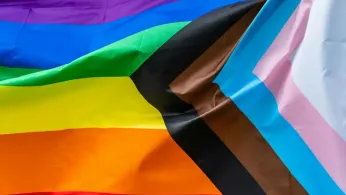
4 hours ago
FBI Employee Sues Over Firing Linked to Pride Flag Display, Raising LGBTQ+ Workplace Concerns
READ TIME: 3 MIN.
David Maltinsky, who had served for 16 years at the Federal Bureau of Investigation, alleges in a newly filed lawsuit that he was terminated by the agency for having a Pride flag draped near his desk. According to Maltinsky, the flag was not just a personal symbol but a gift from the FBI itself—awarded after it had been flown at the agency's Los Angeles office, highlighting the apparent contradiction between the gesture and subsequent disciplinary actions .
The firing came just weeks before Maltinsky was to be promoted to the position of Special Agent, intensifying the impact of the dismissal both personally and professionally. Maltinsky claims the decision was unlawful and asserts that it has created a climate of fear and uncertainty for LGBTQ+ employees working within the FBI .
Maltinsky’s lawsuit, filed against the Department of Justice, the Attorney General, and the FBI Director, alleges wrongful termination and discrimination based on his display of the Pride flag. The lawsuit comes amid ongoing discussions about the visibility and rights of LGBTQ+ people in federal workplaces and follows several years of debate over workplace policies regarding personal items and symbols, including those representing marginalized communities .
The FBI declined to comment on the specifics of Maltinsky’s case, citing the ongoing legal process. The agency has not released a public statement addressing how the display of non-work-related flags or items is managed internally, nor whether explicit guidelines were communicated to Maltinsky or other employees .
Maltinsky’s firing and subsequent lawsuit have resonated within the FBI’s LGBTQ+ employee network and among wider advocacy groups, many of whom view the case as a litmus test for the agency’s commitment to inclusion. Maltinsky reported that his dismissal has sent a “ripple of fear” through LGBTQ+ employees at the FBI, raising questions about the safety and acceptance of expressing LGBTQ+ identity—even symbolically—within federal institutions .
Advocates for LGBTQ+ rights have called for greater transparency from the FBI regarding its internal policies and for federal agencies to reaffirm their commitments to diversity and inclusion. The case has also reignited discussions about the importance of visible symbols like the Pride flag in fostering supportive environments for marginalized employees .
The Pride flag, recognized globally as a symbol of LGBTQ+ pride and resistance to discrimination, has increasingly been incorporated into public and private institutions as a marker of support and inclusion. In Maltinsky’s case, the flag’s provenance—the fact that it was flown at an FBI office and gifted by the agency—further complicates the narrative, suggesting a disconnect between public gestures of support and the lived experiences of LGBTQ+ employees .
Critics of Maltinsky’s firing argue that such actions undermine years of progress toward greater representation and respect for LGBTQ+ individuals in government. They point out that symbols like the Pride flag are not merely decorative but serve as critical beacons of safety and solidarity, particularly in environments where LGBTQ+ people may feel vulnerable .
The case has spurred renewed attention to the policies governing personal expression in federal workplaces, with many calling for agencies to clarify and, where necessary, update their guidelines to prevent discriminatory outcomes. Maltinsky’s lawsuit may have far-reaching implications, potentially prompting federal reviews of workplace equality standards and the treatment of LGBTQ+ employees across U. S. government agencies .
In the absence of clear public policy from the FBI, debate continues over the balance between professional decorum and personal expression, especially as it relates to symbols that represent historically marginalized groups. The outcome of Maltinsky’s lawsuit may set precedent for how similar cases are handled in the future and could either embolden or discourage LGBTQ+ visibility within federal institutions .
Maltinsky’s story has gained traction on social media and in national news outlets, with the public weighing in on questions of workplace fairness, free expression, and the ongoing struggle for LGBTQ+ equality in the United States. The case arrives at a time when LGBTQ+ rights remain a contentious issue in American politics, with advocacy organizations and lawmakers closely monitoring developments .
As the legal process unfolds, advocates and legal experts will be watching closely to see how the courts interpret federal anti-discrimination statutes as they pertain to symbolic displays like the Pride flag. Maltinsky’s case is likely to influence future policy discussions and serve as a touchstone for broader debates about LGBTQ+ inclusion, workplace rights, and the role of government agencies in fostering environments that are safe and affirming for all employees .






